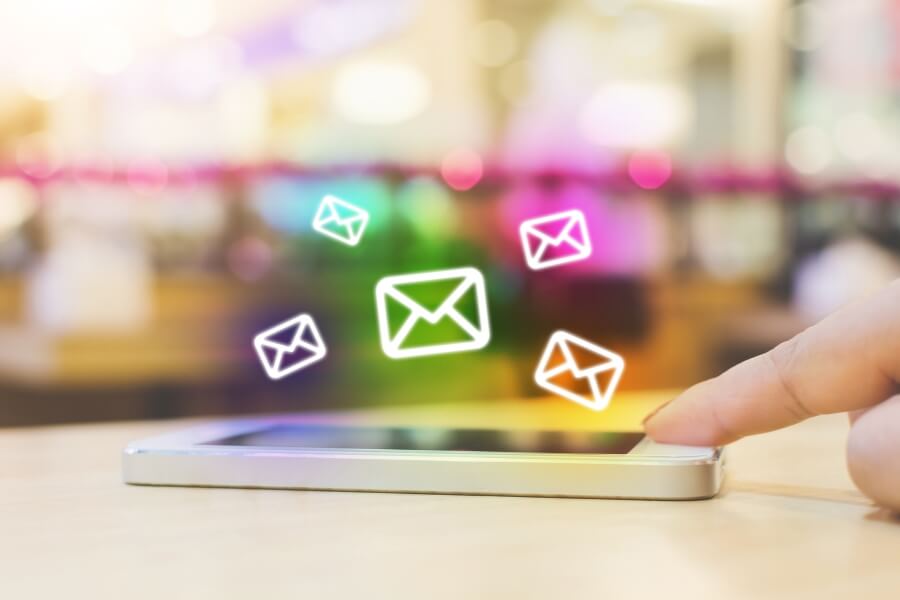You’ve heard about it.
You’ve probably even spoken about it, or might even have it in place.
But what actually is marketing automation?
In many of our conversations with our customers — and even internally — we often find that there is a lot of confusion around what marketing automation actually is.
When people talk about ‘marketing automation’ as a tool or system it’s a phrase that you hear used sometimes interchangeably with email marketing. Or with CRM.
Marketing automation is just that. Automating your marketing.
It relies on a great CRM, good email and messaging tools, and excellent tracking of customer behaviour. Hopefully all within the same platform.
People are genuinely confused. And we don’t blame them.
Email marketing v marketing automation – what’s the difference?
Email marketing is simply sending email campaigns to people. Email marketing platforms were built to do just that.
And then layers of automation were added on.
- If someone joins my email list, send them an email.
- If someone unsubscribes from my email list, send them a different email.
- If someone clicks on this link in my email, take this action.
Platforms like Mailchimp and Campaign Monitor are built for this purpose.
Most email marketing platforms have aspects of marketing automation — and vice versa.
Automation is just taking the manual work out of marketing. But here’s the thing, the term ‘marketing automation’ has come to stand for platforms that automate email and site-messaging based communications. They’re often also focused on managing customers (they’re a CRM) and automating the process of segmenting lists.
No wonder people don’t know what they’re looking for.
A full marketing automation platform — think Infusionsoft, Drip, ActiveCampaign or the Aussie favourite, Autopilot — can be used to send email campaigns and so much more.
They take the simple if/then sequences above and put them on steroids.
- If people visit my product page tag them as interested in that product.
- If they visit that page 5 times, tag them as very interested.
- Check if they’ve bought that product yet.
- If they still haven’t purchased the product, and they are a new customer, send them an email with a 15% discount.
- If they still haven’t purchased the product, and they’re an existing customer, send them a 10% discount.
- Trigger a pop-up message to remind them of the discount the next time they visit the site.
Marketing automation platforms give you the tools to access advanced information about the people on your list so that you can,
- Learn more about the interests and behaviours of your customers.
- Better segment your customers (automatically! Saving you time and money).
- Keep a ‘cleaner’ list without stack of manual interventions.
And, the most important thing, give them information about the things they are interested in, at the time they are most likely to need it.
It means when someone engages with your business, from a quick browse right through to the purchase, they are getting a response from you, that is relevant to where they are in the sales funnel.
Why automate?
Call it the Tim Ferriss effect, but isn’t automating yourself more time in your day one of the greatest benefits of the modern age?
But more than that — it is about building relationships with your customers and engaging with people at all stages of the purchasing process.
Using automated marketing, you can nurture the interest of the people who are at the very early stages of the buying process, all the way through to sales, follow up and repurchasing.
And while automation does great things for your conversion rates (as both a product and service based business) and buys you time, you really only get out what you put in to start with.
It does take planning and time to set up.
Taking the time to set these automations up helps keep your end goal in mind and ensures you are taking the right steps to get your customer there.
The automations you need
Step 1. Build a welcome series
You would welcome someone if they came into your office.
You would sit them down, explain what your business does and how it can help them. You would arrange a follow up and give them some take home information to mull over.
Why wouldn’t you also welcome someone to your email list (as a potential customer) or your business (when they first convert)?
We are still people, communicating with other people.
People are most engaged when they’ve signed up to your list, or just purchased something.
How are you going to take hold of that interest? Your welcome might be one simple email introducing the business and its philosophy. You might have a series of three emails helping people learn about the business, your key services and then offering them the next way to engage (a meeting, a discount, a package or offer).
Automation drives this communication so that every time someone enters your digital ecosystem, nobody is left hanging.
It helps you personalise messages, moving from less one-to-many and more one-to-one communication. It’s that point where the ‘robots’ help us be more human.
Step 2. Revive your dying contacts
Email marketing is SO powerful. We all capture so much data every day, it’s time to use it!
Identify customers/clients who haven’t purchased from you or used your services recently. It could also be those who haven’t made a purchase at all, despite signing up for your email notifications. Or those who have received all your emails but never ever clicked.
What message could you send these people to get them more involved, and turn them not just loyal followers, but loyal buyers?
We try to send an email to our subscribers once a month. If one of our subscribers hasn’t opened an email from us or visited the any page at our website after 4 months, we send them a little note to please not die off! Even if we miss a month’s regular email (hey, we’re only human!) the four month timeline gives our subscribers plenty of time to re-engage.
Step 3. Automate your social media
Automating content curation and posting processes is such a time saver.
We’re currently using Sendible to schedule content, or add it to queue, a few times a week. While nothing replaces being active in the channels and engaging to build loyalty, automating the smaller elements of our social media plan, has saved us tonnes of time. We can use our new found time for doing more important things, like engaging with like-minded users, planning great content for our blog and newsletters, and doing great work for clients, which is what we really love.
Which platform is best for you?
The best platform for you is going to depend on what your business is — are you selling a product online? Or providing a service?
MailerLite is a personal favourite of mine and perfect for smaller businesses who are just getting into email marketing and automations. Their advanced tools, landing pages, workflows, drag and drop builder and incredible integrations with ecommerce platforms make it flexible, yet incredibly user friendly.
Drip is fantastic for ecommerce businesses, because it’s been built for that purpose. All their metrics are focused on how many new people visited your store, how many of them signed up to your email list, and how many of those bought something. Perfect for data-driven teams..
Active Campaign is incredibly powerful when it comes to tagging your customers based on the events they undertake on your site. It has the added feature of a great sales dashboard with a pipeline — ideal for businesses with active sales people who want to keep all of their leads, regular email communications and marketing automations in one place. It goes far beyond email campaigns, collecting information that can drive deals forward and track progress across different teams.
Autopilot is one of the most user friendly platforms. It’s incredibly visually appealing and has heaps of tools to help you set up the automations you need. It’s one of the easiest to integrate with forms on your website. Where, with other platform you might need developer assistance, Autopilot makes connecting to your site easy. It also collects a lot of anonymous user data giving you a complete picture of a contact from before they officially signed up.
We’ve also got a run down on social media scheduling platforms to help you automate that portion of your marketing.
Something to remember…
There’s something both automations and email campaigns need in order to serve their purpose — customer details!
Marketing teams always need to be thinking about ways to get people on that list.
So when you’re planning campaigns to drive traffic to your website, don’t neglect to gather email addresses once your customers get there.
A customer who signs up to a newsletter list is very engaged and is close to the ‘purchase’ end of the funnel. So business owners need to cross the barrier and let them know they are valued.



